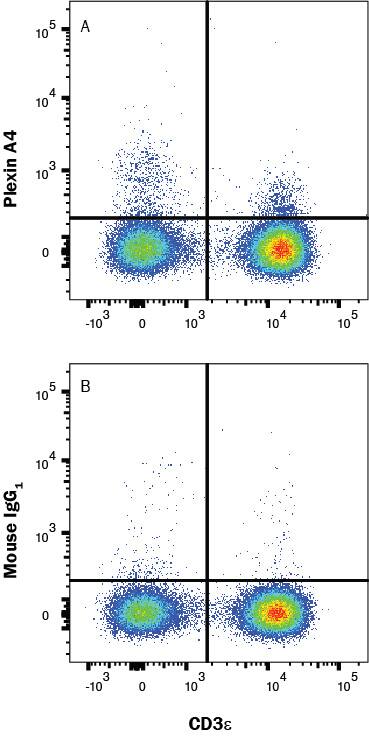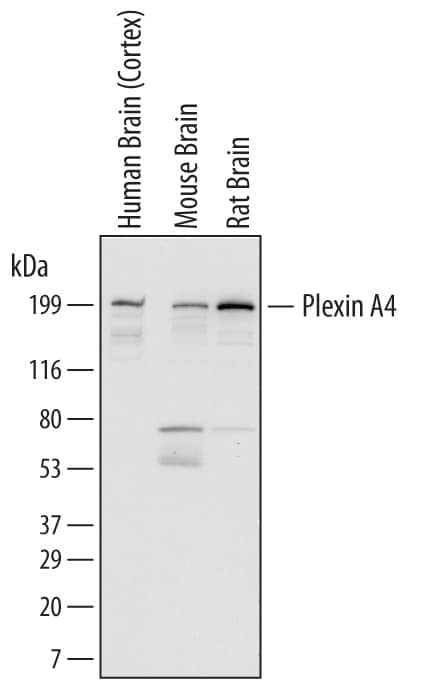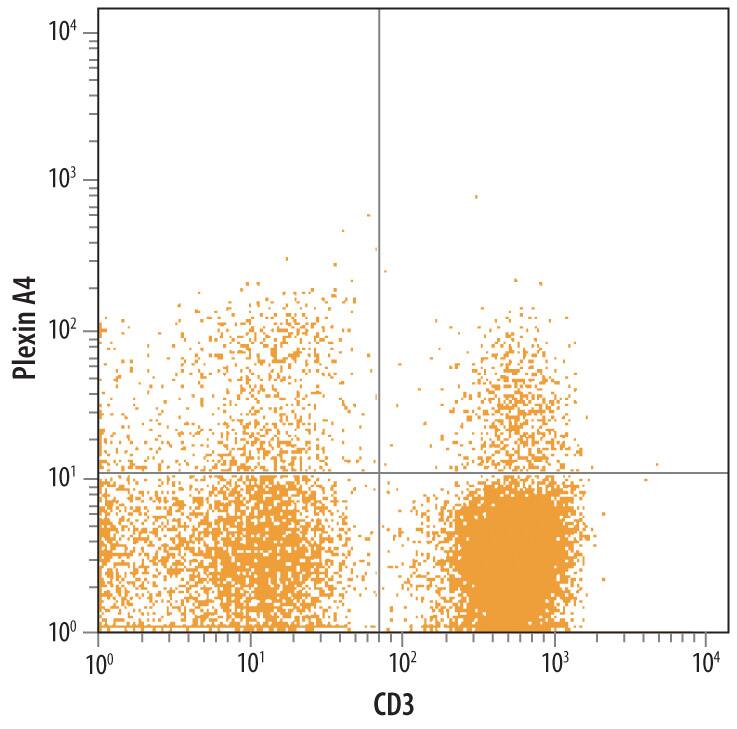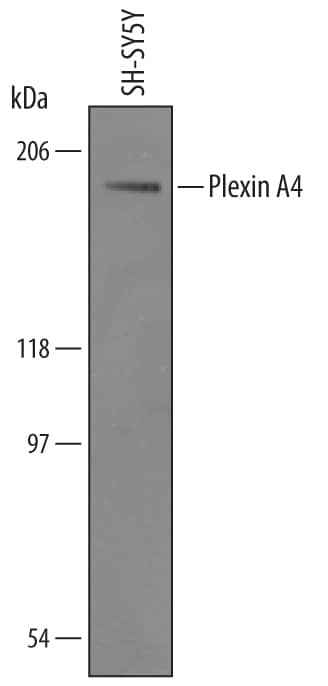Plexin A4 Products
Plexin A4 is a 220 - 230 kDa member of the plexin A subfamily, plexin family of proteins. It is found on sensory, autonomic and motor neurons and oligodendrocytes, plus T cells and dendritic cells. Mature human Plexin A4 is an 1871 amino acid (aa) type I transmembrane glycoprotein with a 23 aa signal sequence, a 1214 aa extracellular domain (ECD), and a 636 aa cytoplasmic region. The ECD contains one Sema-domain (aa 51 - 482), three PSI domains (aa 509 - 856) and four IPT regions (aa 858 - 1230) that contain a phosphoserine at aa 946. Of three isoform variants, one shows a 65 aa substitution for aa 458 - 1894, a second shows an 80 aa substitution for aa 1292 - 1894, and a third shows the just mentioned 80 aa substitution coupled to a 14 aa substitution for aa 1 - 535. The human Plexin A4 ECD shares 97% aa identity with mouse, equine, canine, and bovine Plexin A4. Full-length Plexin A4 also shares 67% aa identity with the most related family member, Plexin A2. Plexin A4 regulates cell migration, activation and axon guidance via repulsion. It serves as a receptor for transmembrane semaphorins, Sema6A and 6B, and as a coreceptor with neuropilin-1 for the secreted semaphorin, Sema3A. During development, it plays a role in nerve migration and midline crossing and down-regulates dendrite formation. It is often co-expressed with Plexin A3, which can also engage class 6 semaphorins but prefers Sema3F/neuropilin-2 to Sema3A/neuropilin-1. Thus, Plexins A3 and A4 are redundant in some functions, but unique in others. In T cells, Plexin A4 engages Sema3A and negatively regulates TCR signals.
45 results for "Plexin A4" in Products
45 results for "Plexin A4" in Products
Plexin A4 Products
Plexin A4 is a 220 - 230 kDa member of the plexin A subfamily, plexin family of proteins. It is found on sensory, autonomic and motor neurons and oligodendrocytes, plus T cells and dendritic cells. Mature human Plexin A4 is an 1871 amino acid (aa) type I transmembrane glycoprotein with a 23 aa signal sequence, a 1214 aa extracellular domain (ECD), and a 636 aa cytoplasmic region. The ECD contains one Sema-domain (aa 51 - 482), three PSI domains (aa 509 - 856) and four IPT regions (aa 858 - 1230) that contain a phosphoserine at aa 946. Of three isoform variants, one shows a 65 aa substitution for aa 458 - 1894, a second shows an 80 aa substitution for aa 1292 - 1894, and a third shows the just mentioned 80 aa substitution coupled to a 14 aa substitution for aa 1 - 535. The human Plexin A4 ECD shares 97% aa identity with mouse, equine, canine, and bovine Plexin A4. Full-length Plexin A4 also shares 67% aa identity with the most related family member, Plexin A2. Plexin A4 regulates cell migration, activation and axon guidance via repulsion. It serves as a receptor for transmembrane semaphorins, Sema6A and 6B, and as a coreceptor with neuropilin-1 for the secreted semaphorin, Sema3A. During development, it plays a role in nerve migration and midline crossing and down-regulates dendrite formation. It is often co-expressed with Plexin A3, which can also engage class 6 semaphorins but prefers Sema3F/neuropilin-2 to Sema3A/neuropilin-1. Thus, Plexins A3 and A4 are redundant in some functions, but unique in others. In T cells, Plexin A4 engages Sema3A and negatively regulates TCR signals.
| Reactivity: | Human, Mouse |
| Details: | Rabbit IgG Polyclonal |
| Applications: | IHC, WB |
Analyzed by SEC-MALS
| Source: | CHO |
| Accession #: | Q9HCM2 |
| Applications: | BA |
| Reactivity: | Human |
| Details: | Mouse IgG1 Monoclonal Clone #707206 |
| Applications: | Flow |
| Reactivity: | Human |
| Details: | Mouse IgG1 Monoclonal Clone #707206 |
| Applications: | Flow |
| Reactivity: | Human |
| Details: | Mouse IgG1 Monoclonal Clone #707206 |
| Applications: | Flow |
| Reactivity: | Human |
| Details: | Mouse IgG1 Monoclonal Clone #707206 |
| Applications: | Flow |
| Reactivity: | Human |
| Details: | Mouse IgG1 Monoclonal Clone #707206 |
| Applications: | Flow |
| Reactivity: | Human |
| Details: | Mouse IgG1 Monoclonal Clone #707206 |
| Applications: | Flow |
| Applications: | WB |
| Reactivity: | Human |
| Details: | Rabbit IgG Polyclonal |
| Applications: | IHC |
| Applications: | WB |
| Reactivity: | Human |
| Details: | Rabbit IgG Polyclonal |
| Applications: | ICC/IF |
| Applications: | AC |
| Applications: | AC |
| Reactivity: | Human |
| Details: | Mouse IgG1 Monoclonal Clone #707206 |
| Applications: | Flow, CyTOF-ready |
| Reactivity: | Human |
| Details: | Mouse IgG1 Monoclonal Clone #707206 |
| Applications: | Flow, CyTOF-ready |
| Reactivity: | Human |
| Details: | Mouse IgG1 Monoclonal Clone #707206 |
| Applications: | Flow, CyTOF-ready |
| Reactivity: | Human |
| Details: | Mouse IgG1 Monoclonal Clone #707206 |
| Applications: | Flow, CyTOF-ready |
| Reactivity: | Human |
| Details: | Mouse IgG1 Monoclonal Clone #707206 |
| Applications: | Flow, CyTOF-ready |
| Reactivity: | Human |
| Details: | Mouse IgG1 Monoclonal Clone #707206 |
| Applications: | Flow |
| Reactivity: | Human, Mouse, Rat |
| Details: | Mouse IgG1 Monoclonal Clone #707201 |
| Applications: | WB, Simple Western |
| Reactivity: | Human |
| Details: | Mouse IgG1 Monoclonal Clone #707206 |
| Applications: | Flow, CyTOF-ready |
| Reactivity: | Human |
| Details: | Sheep IgG Polyclonal |
| Applications: | WB |

![Immunohistochemistry-Paraffin: Plexin A4 Antibody [NBP1-85128] Immunohistochemistry-Paraffin: Plexin A4 Antibody [NBP1-85128]](https://resources.bio-techne.com/images/products/Plexin-A4-Antibody-Immunohistochemistry-Paraffin-NBP1-85128-img0004.jpg)

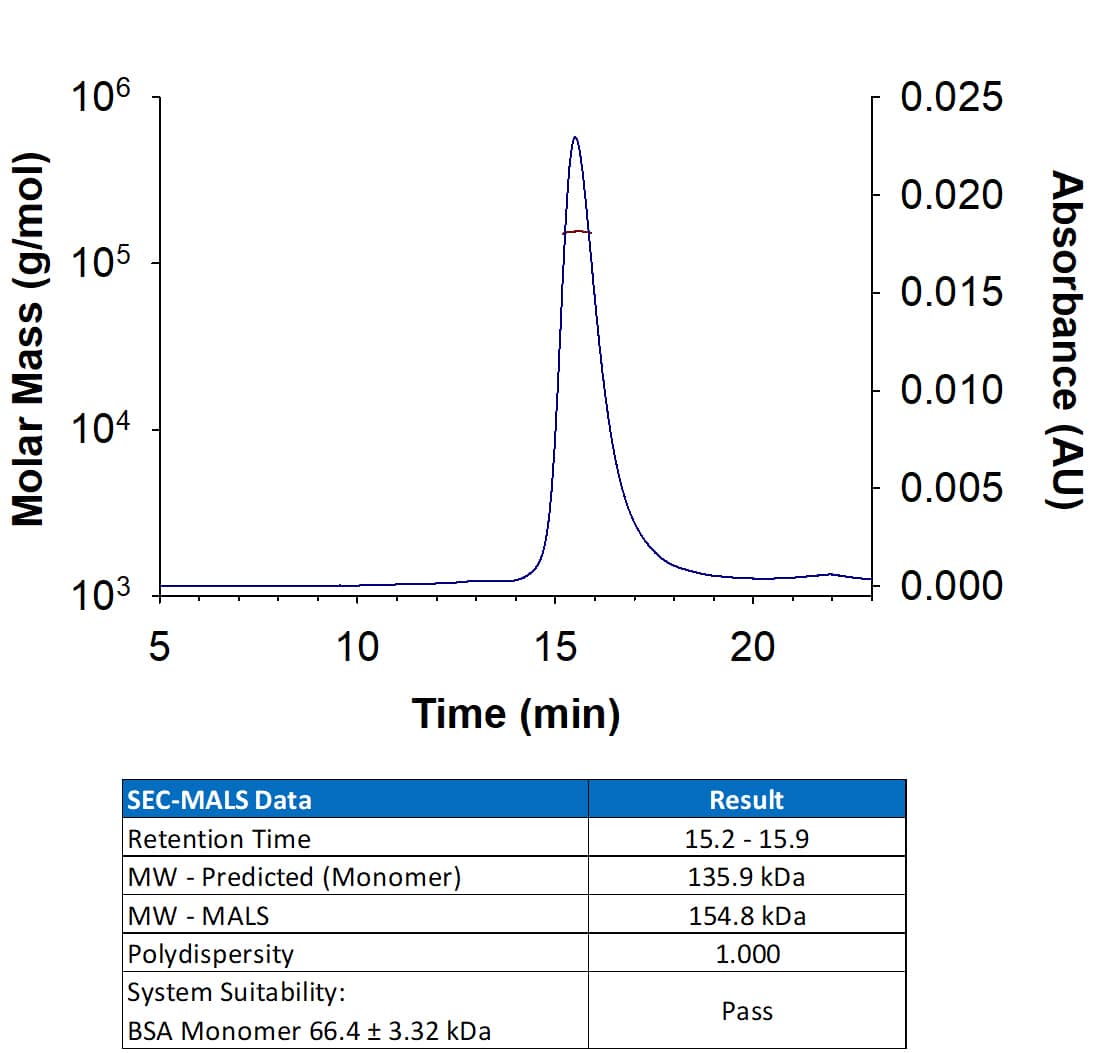
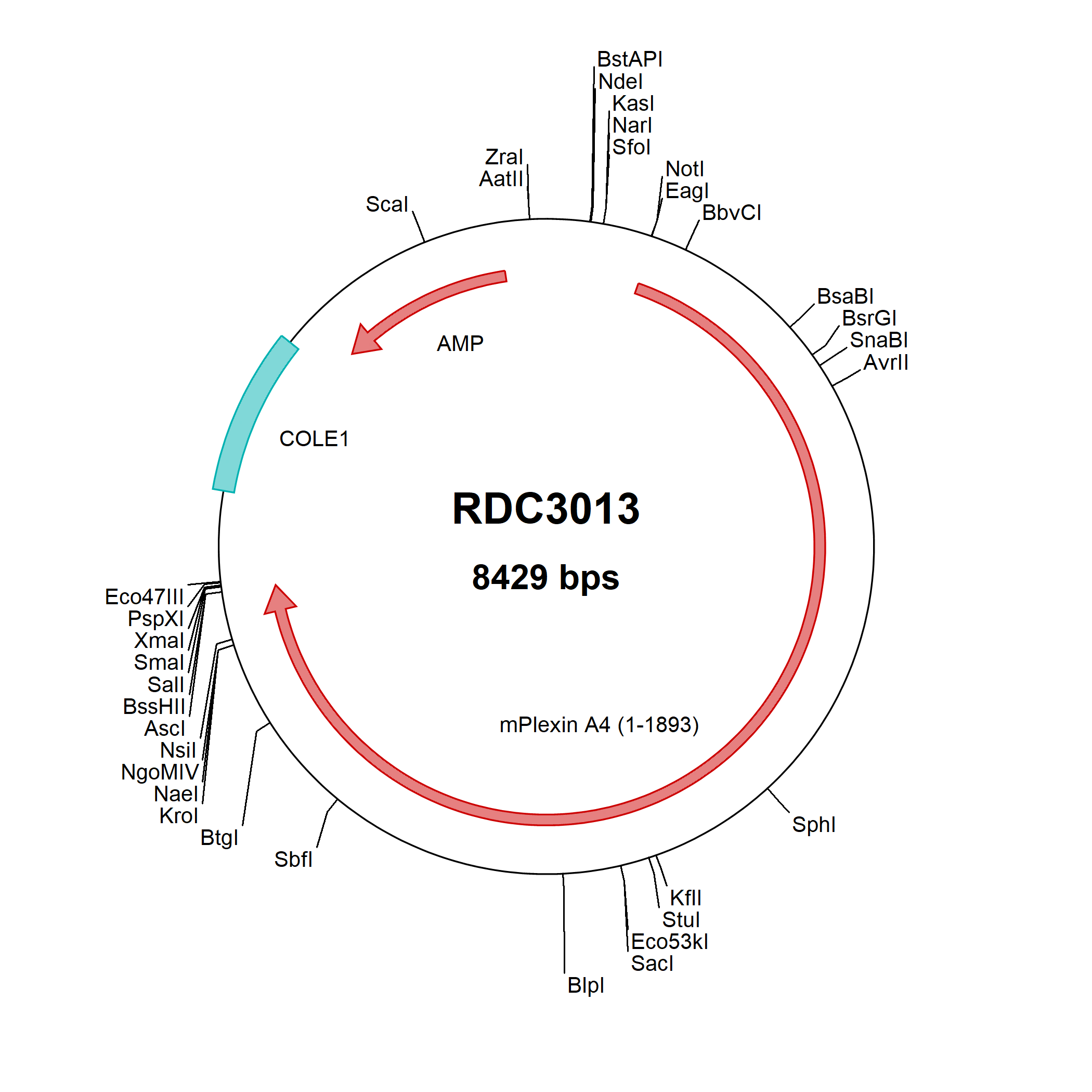
![Western Blot: Plexin A4 Overexpression Lysate [NBP2-11270] Western Blot: Plexin A4 Overexpression Lysate [NBP2-11270]](https://resources.bio-techne.com/images/products/Plexin-A4-Overexpression-Lysate-Adult-Normal-Western-Blot-NBP2-11270-img0001.jpg)
![Immunohistochemistry-Paraffin: Plexin A4 Antibody [NBP2-38663] Immunohistochemistry-Paraffin: Plexin A4 Antibody [NBP2-38663]](https://resources.bio-techne.com/images/products/Plexin-A4-Antibody-Immunohistochemistry-Paraffin-NBP2-38663-img0002.jpg)
![Western Blot: Plexin A4 Overexpression Lysate [NBP2-11421] Western Blot: Plexin A4 Overexpression Lysate [NBP2-11421]](https://resources.bio-techne.com/images/products/Plexin-A4-Overexpression-Lysate-Adult-Normal-Western-Blot-NBP2-11421-img0001.jpg)
![Immunocytochemistry/ Immunofluorescence: Plexin A4 Antibody [NBP2-69011] Immunocytochemistry/ Immunofluorescence: Plexin A4 Antibody [NBP2-69011]](https://resources.bio-techne.com/images/products/Plexin-A4-Antibody-Immunocytochemistry-Immunofluorescence-NBP2-69011-img0001.jpg)

